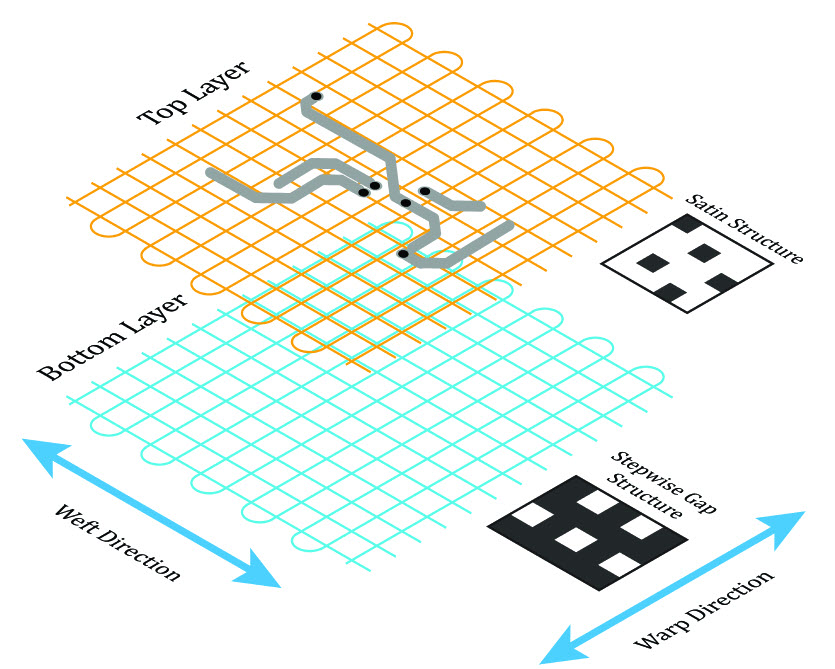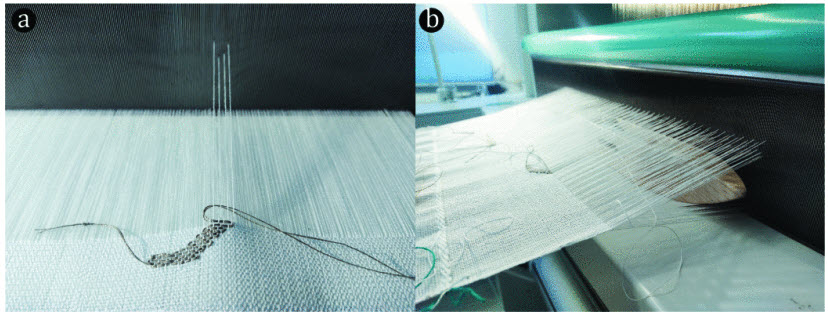The field of smart textiles is concerned with implementing circuitry into fabric to realize different applications for soft electronics. Utilizing weaving as a fabrication method, ubiquitous integration of circuitry can be achieved. However, current technologies do not utilize weaving to its full potential. Most works implement conductive threads or substrates aligned with the weaving structure itself, without considering the design potential that weaving structures offer. This paper synthesizes the properties of conductive threads for electrical connectivity and proposes a novel weaving technique to enable PCB-like implementation of circuitry on fabric. This is achieved through the identification of several conductive thread properties, giving more flexibility in designing circuitry for smart textiles.
This research is published here: https://ieeexplore.ieee.org/document/10667151/

An illustration of layers and weaving structures: the top layer contains conductive paths, while the bottom layer serves as insulation.

Weaving process for loom. a) Computational top-layer step containing the conductive path, woven with conductive thread. b) Computational bottom-layer step containing the insulating layer, woven with cotton yarn
Acknowledgement of Funding
This project was funded by the National Sciences and Engineering Research Council of Canada (NSERC) through a Discovery Grant (2021-04135) and a Research Tools and Instruments Grant (RTI), as well as through a Queen’s Research Initiation Grant (RIG). We also acknowledge the support of Ontario Research Fund and Canadian Foundation for Innovation for this research.